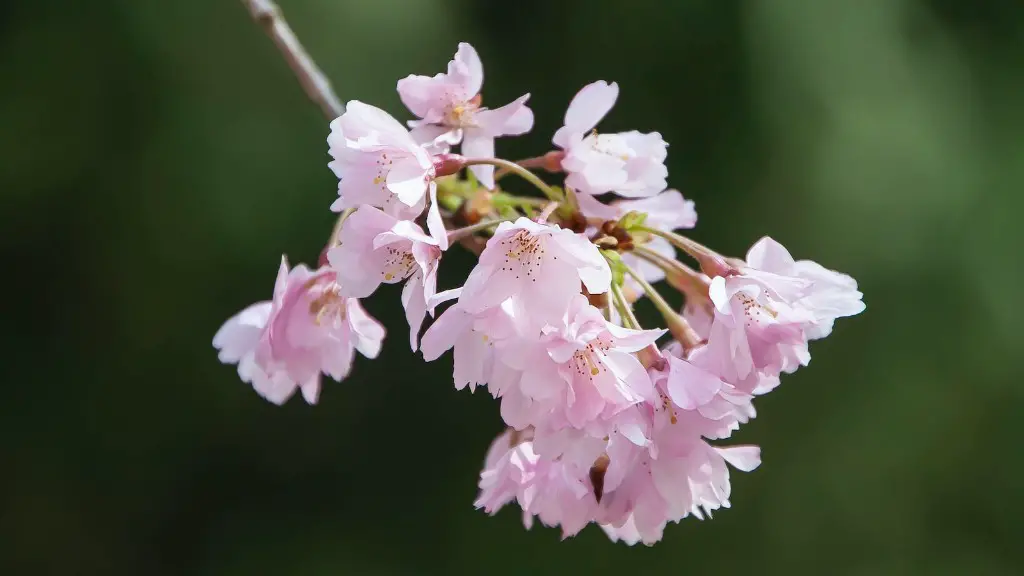Section 1 – Basics of Bonsaiing a Lemon Tree
Bonsaiing a lemon tree is a great way to create an aesthetically pleasing and eye catching garden feature. Not only are lemon trees attractive to look at, they also provide delicious lemons throughout the year when cared for properly. Bonsaiing a lemon tree requires knowledge of the proper techniques to ensure the best possible outcome. It is essential to know the basics of bonsaiing such as potting, pruning and wiring before attempting to bonsai a lemon tree.
Potting is the process of selecting the right soil and pot to hold your lemon tree. This will depend on the size and shape of the tree. It’s important to make sure the soil is well drained and the pot provides adequate drainage.
Pruning is necessary in order to shape and maintain the desired size and shape of the lemon tree. This should be done carefully and with precision to avoid damaging the tree. The branches must be cut at a 45 degree angle and the excess branches should be removed to create a well-shaped tree.
Wiring is done to create a desired shape for the lemon tree and is done by wrapping flexible wires around the branches and trunk of the tree. This must be done carefully to avoid damaging the branches or trunk. The wires should be removed after a few months when the desired shape has been achieved.
These are the basic techniques required to start bonsaiing a lemon tree. For best results, it is important to follow the steps in the correct order and to take care when applying each step to avoid any damage to the tree.
Section 2 – Advanced Techniques for Bonsaiing a Lemon Tree
Once you have mastered the basics of bonsaiing a lemon tree, there are several advanced techniques that can be used to further enhance the look and shape of your lemon tree. These techniques can give your lemon tree an even more unique and unique shape.
Root pruning is one of the techniques used to reduce the size of the root system and prevent overcrowding of the roots within the pot. Root pruning helps the tree to remain healthy and reduce the chances of root rot, as well as creating a better overall shape.
Defoliation is another technique which involves removing certain leaves in order to help with overall shape and structure of a lemon tree. This should be done if the tree is overcrowded or if it needs a more naturalistic shape. It is important to be careful when defoliating as it can cause the tree to stress or even kill it if done incorrectly.
Tip and branch positioning is a technique which is used to help manipulate the position of the branches and leaves. This is done using wires and can be used to further improve the shape of the lemon tree. Care must be taken when using wires as they can pinch and damage the branches if they are applied incorrectly.
Soil selection is also an important factor in bonsaiing a lemon tree as different types of soil provide different levels of nutrients for a particular tree type. This ensures that the tree has adequate nutrients to stay healthy and provide tasty lemons.
These advanced techniques are essential in creating a unique bonsai lemon tree that looks great and is beneficial to the health of your lemon tree.
Section 3 – Tools for Bonsaiing a Lemon Tree
When bonsaiing a lemon tree, it is essential to have the right tools for the job, so that you can complete the task with precision and accuracy. The basic tools that are needed are pruning shears, root pruners, wire cutters and tweezers.
Pruning shears are used to trim the branches and leaves of a lemon tree, and are the most important tool when bonsaiing. Pruning shears come in a variety of sizes and shapes, and it is important to select the right one for the job.
Root pruners are used to prune the roots of the lemon tree, and should be used with care. Root pruners are specially designed with a narrow cutting edge to reduce the risk of damaging the roots when pruning.
Wire cutters are used to trim the wiring around the lemon tree, and it is important to select the right wire for your particular tree in order to avoid any damage.
Tweezers are also essential for manipulating the position of the branches and leaves, and should be placed carefully so that the tree does not become damaged.
Having the right tools for the job is extremely important when bonsaiing a lemon tree. It is essential to select the right tools and use them with precision to achieve the best possible outcome.
Section 4 – Fertilizing a Bonsai Lemon Tree
In order to keep a bonsai lemon tree healthy and producing tasty lemons, it is important to fertilize the tree on a regular basis. Fertilizing a lemon tree ensures that the tree has access to the nutrients it needs to stay healthy.
The type of fertilizer used will depend on the specific needs of the tree. Organic fertilizers are generally preferred as they provide a range of nutrients as well as promote healthy root growth. It is also important to use the correct ratio of fertilizers in order to optimize the growth of the tree.
It is important to water the tree regularly in order to help the fertilizer take effect. The soil should be kept moist but not soggy and it is important to avoid overwatering as this can lead to root rot.
It is important to remember that fertilizer should only be used when necessary and not as a substitute for proper watering and pruning. Overfertilizing can cause damage to the roots and can lead to unhealthy growth.
Fertilizing a bonsai lemon tree is an important part of care and maintenance, and if done correctly can result in a healthy, thriving lemon tree that produces delicious lemons throughout the year.
Section 5 – Repotting a Bonsai Lemon Tree
Repotting a bonsai lemon tree is an essential part of its care and should be done every few years. This allows for a new, fresh soil mix to be used, as well as removing any dead or diseased roots.
When repotting a bonsai lemon tree, it is important to first select the right pot size and material. The pot should not be too large or too small, and should provide good drainage. Clay or plastic pots are the best options, as they provide adequate drainage and do not interfere with the roots too much.
The soil used when repotting should be well-draining and acidic, with pH levels between 5.5 and 6.5. This will provide the right environment for the tree to thrive in. Additionally, it should be light and airy to allow for good drainage and aeration.
After the new pot and soil are selected, the tree should be carefully removed from its old pot and cleaned of all old soil. The roots should then be pruned and trimmed, and the tree should be placed in the new pot.
It is important to keep the roots covered with soil when repotting and to water the tree once it is in the new pot. This will allow the roots to become established in the new soil and maximize the chances of success.
Section 6 – Common Mistakes When Bonsaiing a Lemon Tree
Bonsaiing a lemon tree can be a rewarding and enjoyable experience, but there are several mistakes that can be easily made. These mistakes can have serious consequences for the health of the tree, so it is important to be aware of them and avoid them.
One of the most common mistakes is overpruning. While pruning is an important part of bonsaiing, it is important not to prune too much as this can lead to damage or even death of the tree.
Underwatering is also a common mistake when bonsaiing a lemon tree. This can lead to the tree becoming stressed and can cause it to die. It is important to water regularly and not let the soil become too dry.
Another mistake which is often made is using soil that is not well draining. This can lead to root rot and can cause the tree to die. It is important to use soil that is well draining and aerated in order to avoid this.
Overfertilization is also a common mistake when bonsaiing. Too much fertilizer can stress the tree and can lead to unhealthy growth. It is important to fertilize only when necessary and to use the correct ratio of fertilizers.
It is important to be aware of these common mistakes and avoid them in order to ensure the best possible outcome when bonsaiing a lemon tree.
Section 7 – Troubleshooting for a Bonsai Lemon Tree
There may come a time when a bonsai lemon tree begins to show signs of distress or disease. In these cases, it can be difficult to diagnose the problem. However, there are some basic steps which can be taken to troubleshoot and determine the cause.
The first step is to check the soil and make sure that it is well-draining. If the soil is too wet, it could mean that the tree has root rot, in which case the roots should be cleaned and replaced.
It is also important to check for signs of pests and disease. If the tree is infested with pests, it is important to take action as soon as possible in order to avoid any further damage.
It is also important to check the tree’s environment. Make sure that the soil is suitable and the tree is not in an area where it is exposed to too much heat or cold.
Finally, it is important to check the tree carefully for any signs of damage or dieback. This could be a sign of disease or an underlying problem which may need to be addressed.
Troubleshooting a bonsai lemon tree is an important part of care and maintenance and can help to diagnose and solve any underlying issues that may be causing the tree distress.



